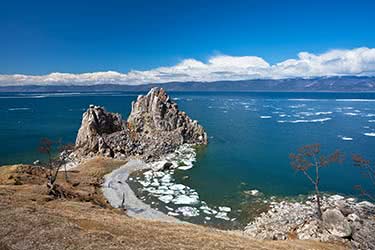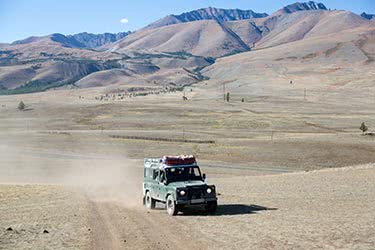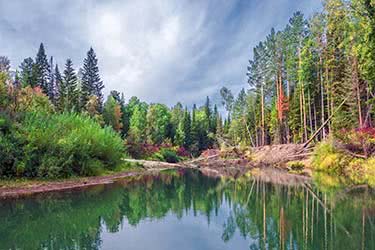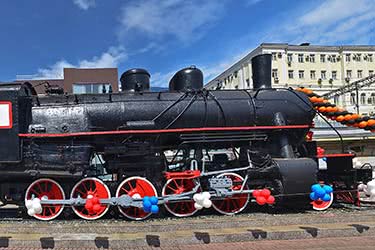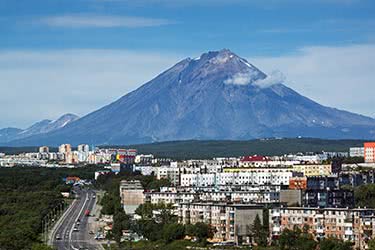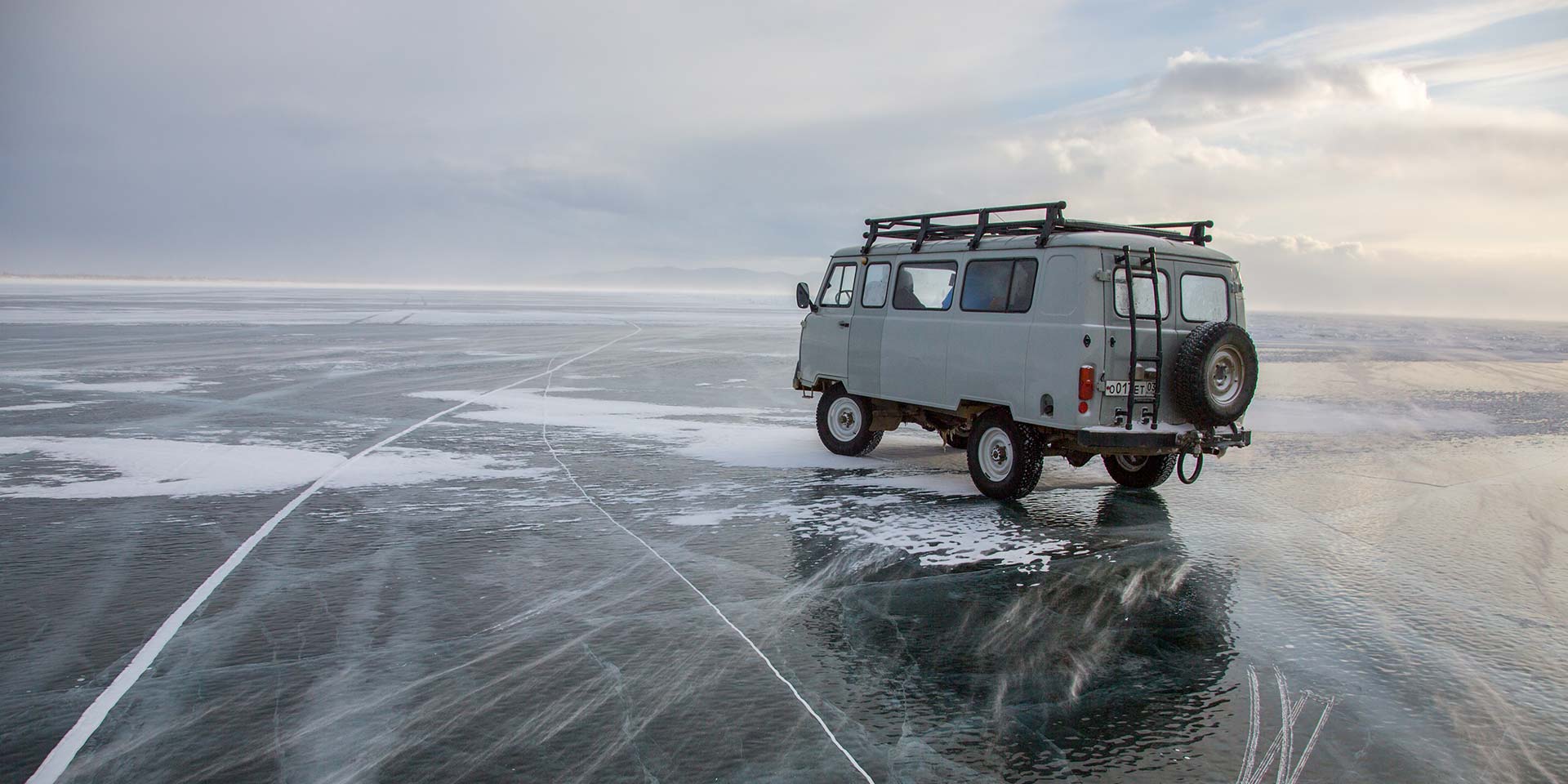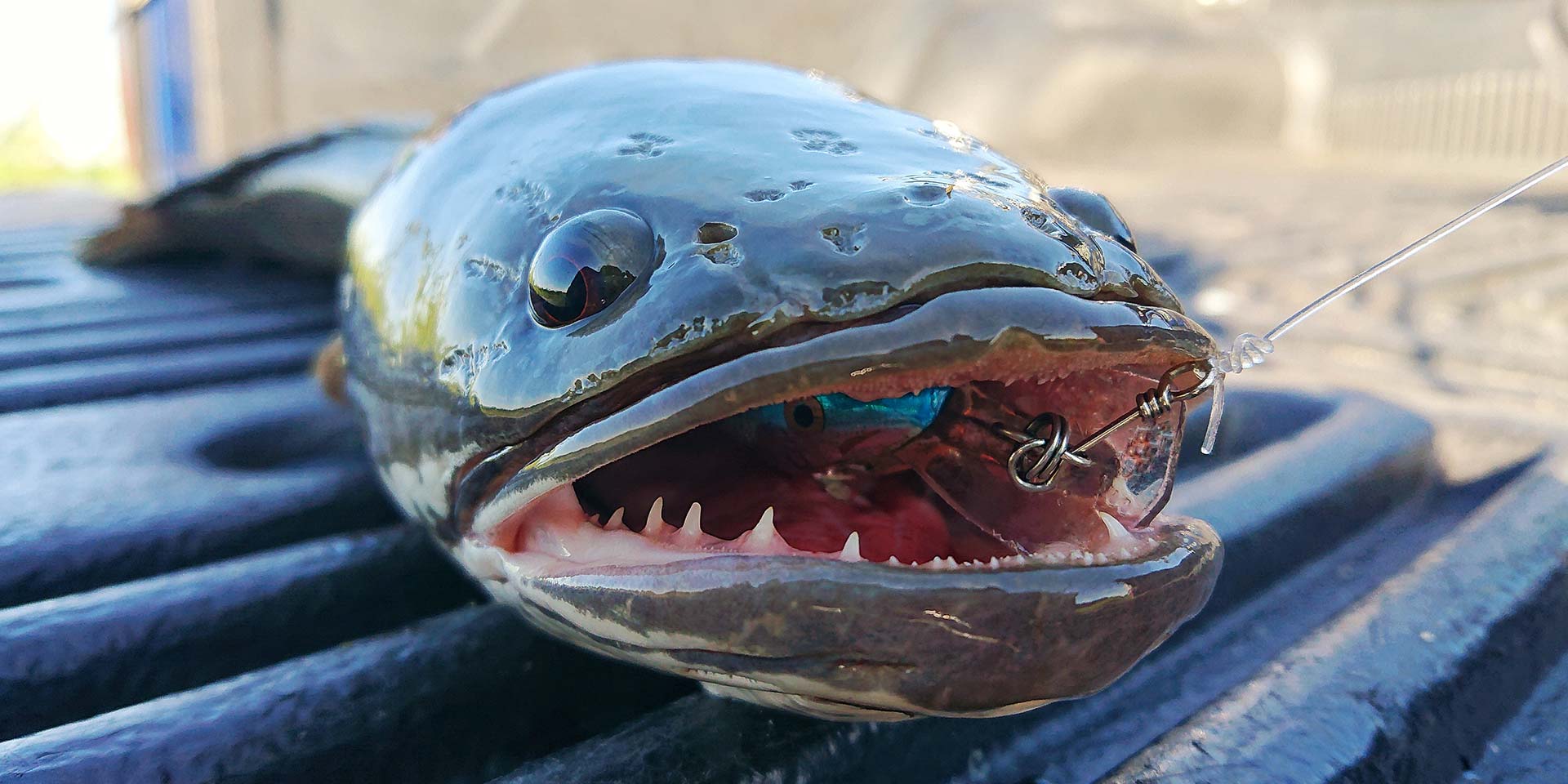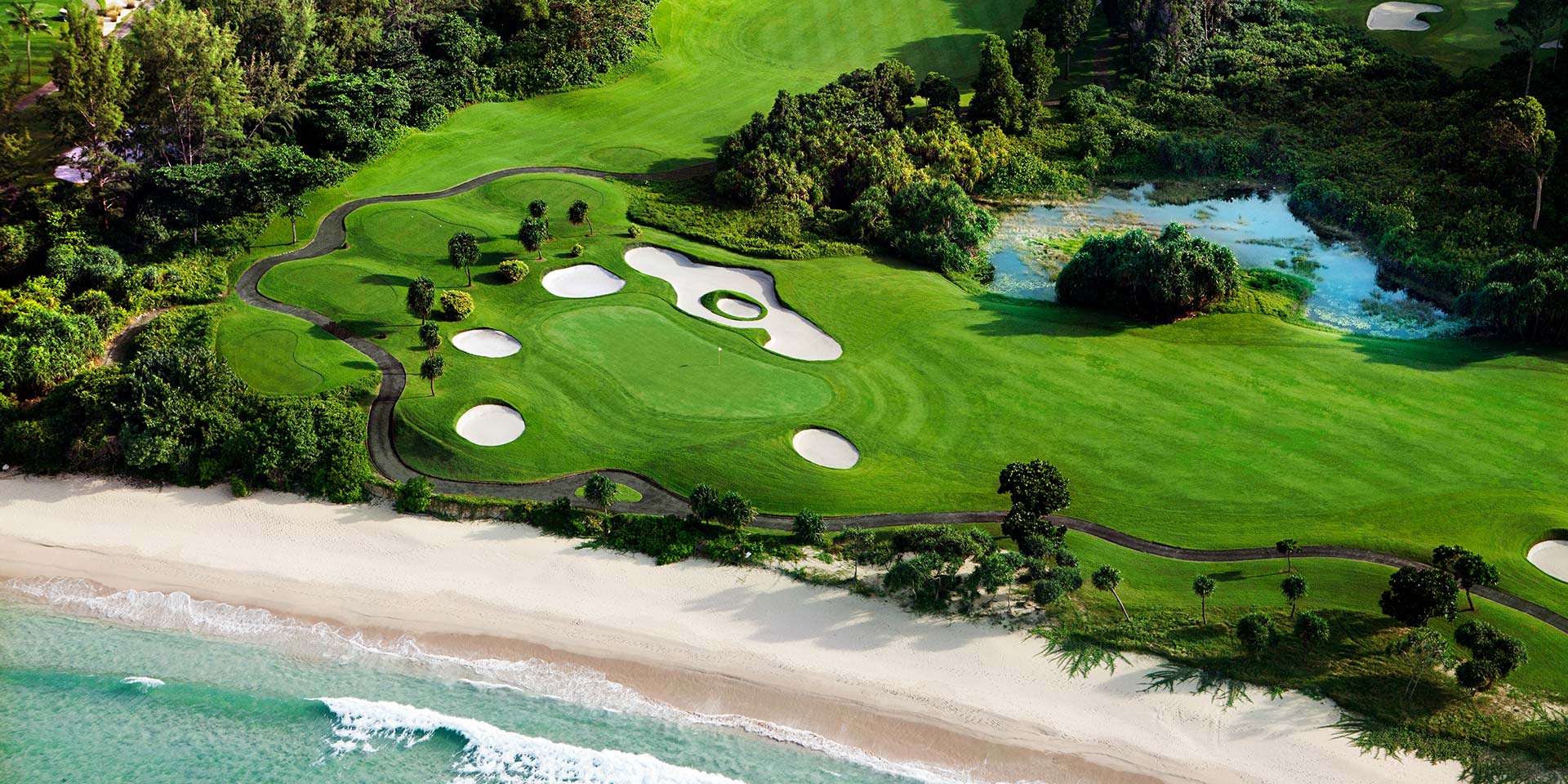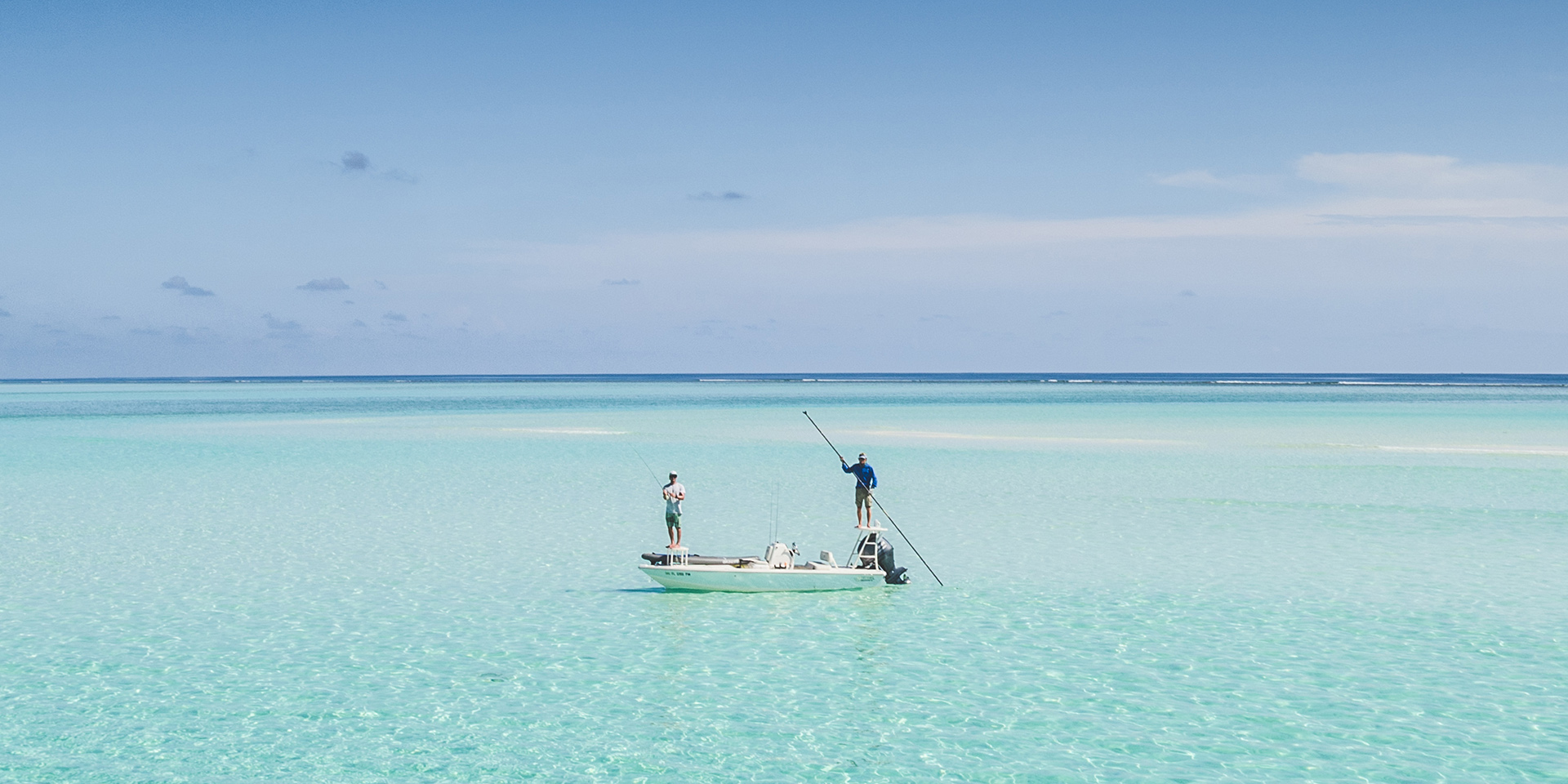More than 127 men and women strung out single file as far as the eye can see run across an otherwise featureless landscape of ice and snow in sub-freezing temperatures, harried on by hulking hovercraft and darting snowmobiles. Covered head to toe, wearing goggles and insulated masks the runners face howling, gale force winds as they move across snow packed as hard as gravel that gives way to wide swaths of ice like polished glass marbled with streaks of frozen gasses. This isn’t the opening of some post-apocalyptic Hollywood blockbuster; these people traveled from 50 countries across the planet to participate in the 15th annual Baikal Ice Marathon.
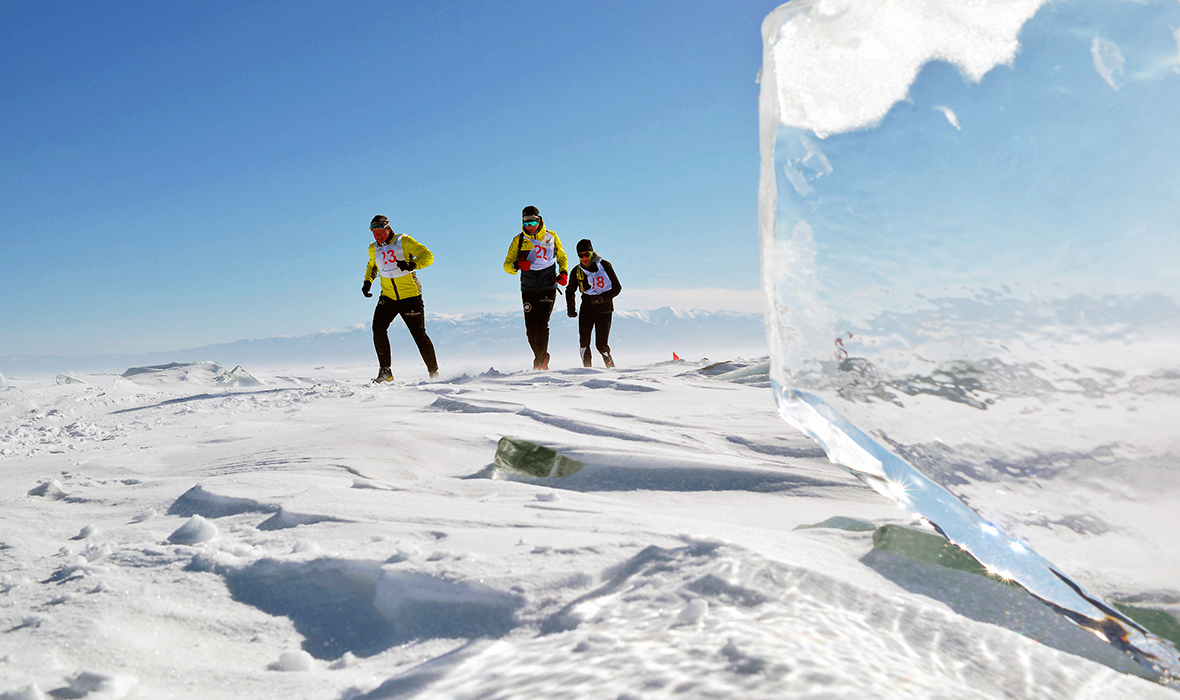
ABOVE: Photograph of the Baikal Marathon by Aleksey Sedov, also featured above.
As adventure and luxury travel and extreme sports continue to meld into single experiences, intrepid athletes come to participate in a foot race across the largest and deepest lake on earth, which also happens to be in one of the coldest and harshest locales: 2,700 kilometers east of Moscow to the once dreaded region of Siberia.
“People think that I am crazy when I say that Baikal is alive, that it is breathing, but they come here and they feel it,” says race organizer and creator Aleksey P. Nikiforov who was asked in 2005 to organize a winter race along the shore of the lake, which continues to become an increasingly more popular destination, when he thought, “Why not across it?”
Thus he and his small crew charted a route from the Baikalsky Nature Reserve on the Eastern shore of the lake 23.2 miles across the meter-thick ice to Listvyanka Village with the added distance to make it a complete marathon used to work around the most treacherous areas of ice. A route so flat and featureless that the hotel marking the finish can be seen from the starting line as a distant orange smudge while aid stations spaced every four miles hover in middle distance across the expanse like mirages.
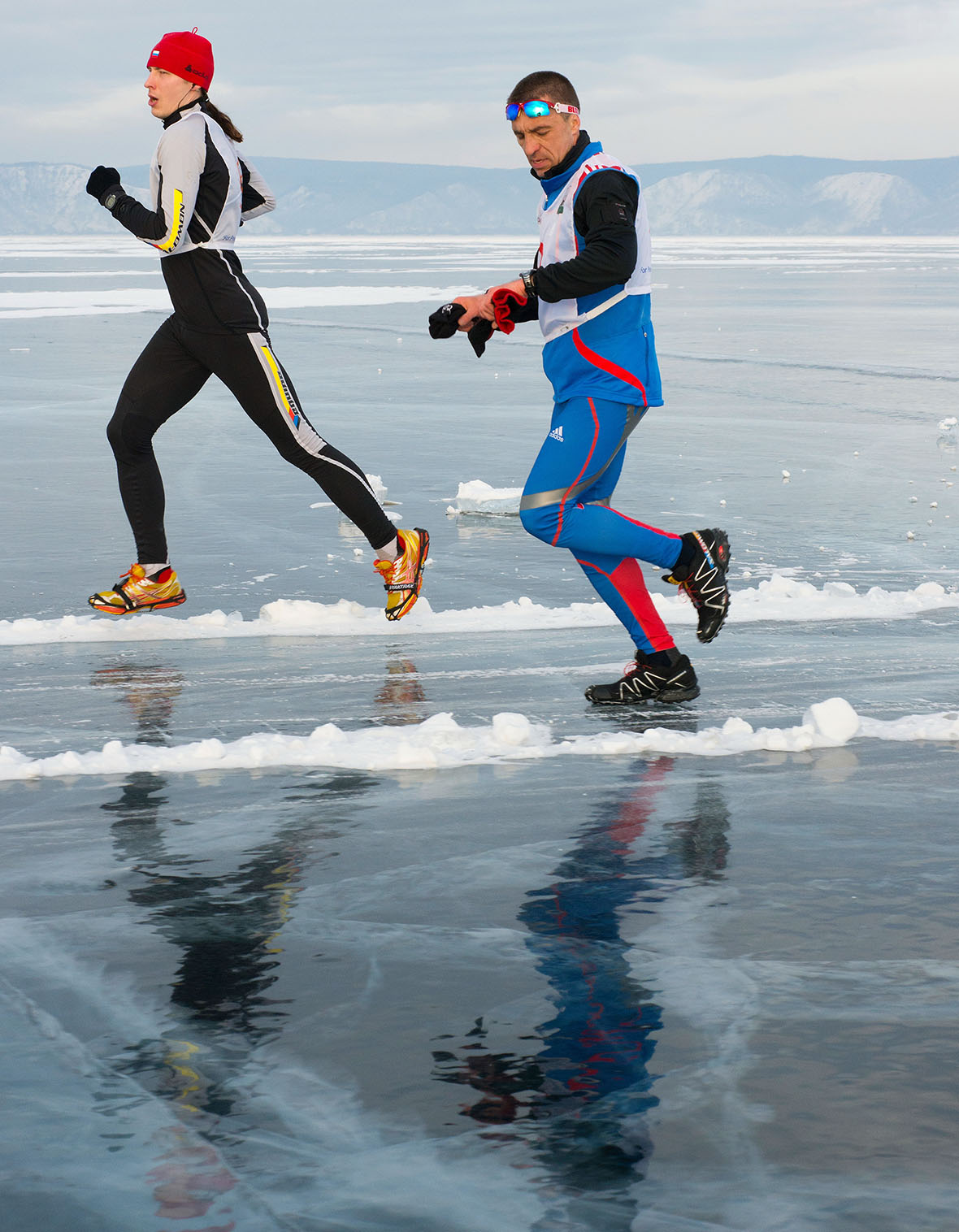
ABOVE:Runners on the ice of Baikal,photo by Louise Murray.
“Baikal is not a race, not a marathon. People are coming back home […] enlightened and you understand that you have touched something great that you cannot describe or explain. All finishers have that feeling of a stroke of genius” Alexander Kaper said about running the Baikal Marathon and his thoughts about the experience being more spiritual than technical are common.
Baikal’s history as a Shamanistic power center is well known and the runners that have taken on the particular challenge of facing it in its harshest state come away talking about the lakes power, it’s symphony. The booming cracks, ice plates grinding against one another and tremors that roll across its surface communicate it’s life force directly to the runners who like Veronique Messina was at first terrified by it,“The ice was shaking. I was shaking. Each time it cracked, I think I ran twice as fast.”
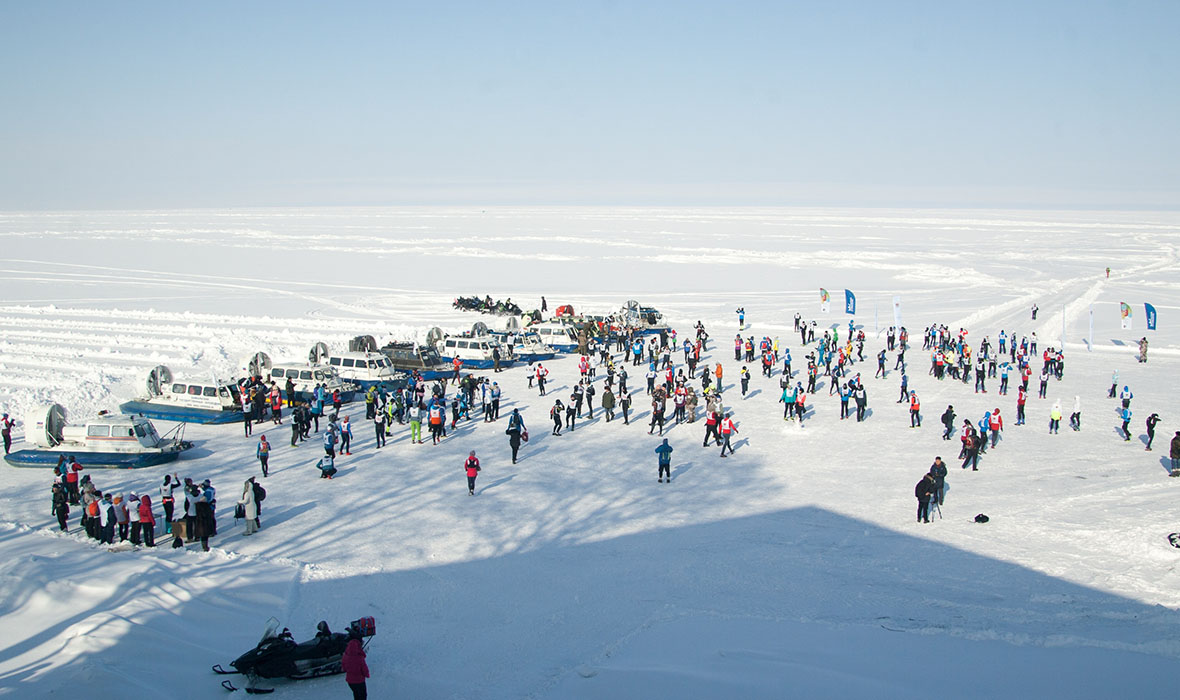
ABOVE: Baikal marathon phoo by Oleg Berezhnikh.
Nikiforov and his crew check the ice methodically in the weeks before the race by boring test holes with a hand drill, “40 centimeters will support a tank” he says when asked about the conditions of the 2019 route where the ice averaged over 65 cm and up to a meter and a half thick in some places. Using snowmobiles they cruise the surface of the route looking for cracks and rifts that can cleave open and slam shut over the course of a day. The ice is checked the morning before the race and monitored throughout the day but other conditions across the lake aren’t so predictable.
The surface of the lake and surrounding area is pocked with microclimates controlled by three legendary winds. In 2017 Nikiforov was forced to shut down mid-race and evacuate the runners on his fleet of hovercrafts when a fierce glacial wind obscured the red flags which mark the course and disorientated the runners, some of whom suffered from frostbite.
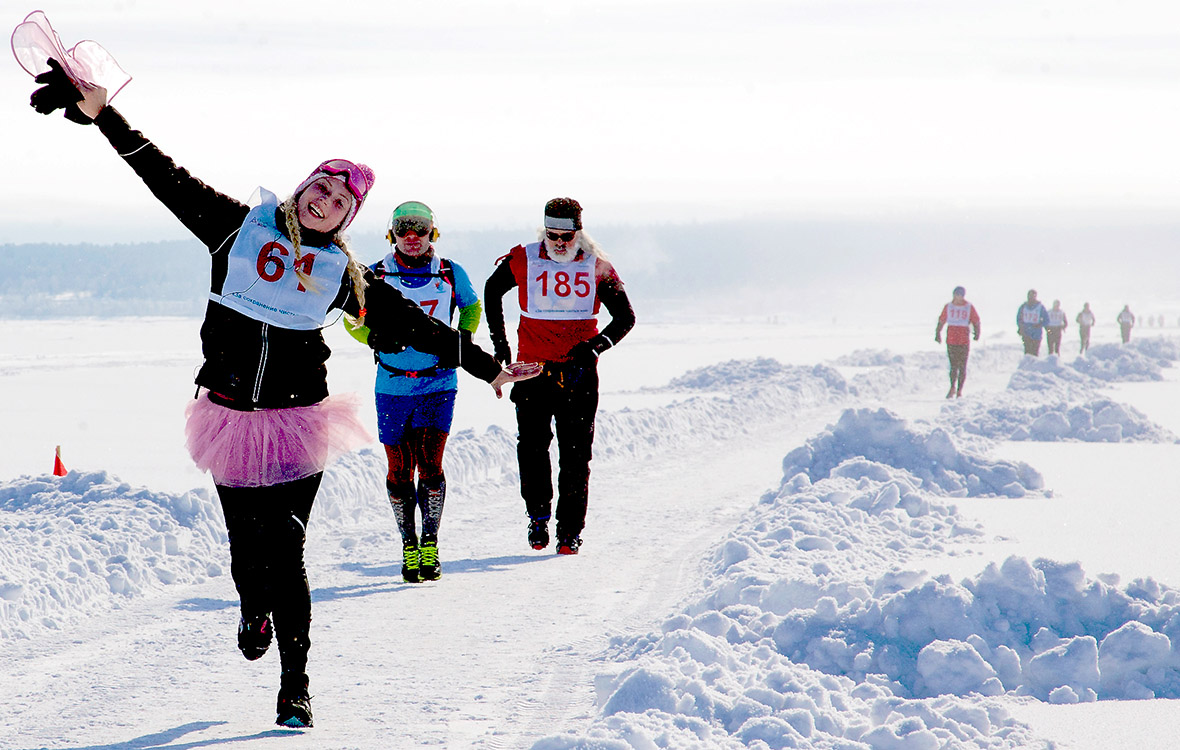
ABOVE: Baikal marathoners, photo by Oleg Berezhnikh.
“The lake sent down lots of unexpected hardships. Starting from the beginning and for the distance of 15 km there was soft snow ankle deep, then the lake gave us some hope – small flat surfaces so our muscles could rest a bit, but in 300-400 meters you see in terror that snow is coming back again, then the sun comes out which is replaced by a very strong wind. I guess it was some kind of a set of well-planned hardships from the lake which a man should overcome,” says 2019 participant Alexander Brechalov.
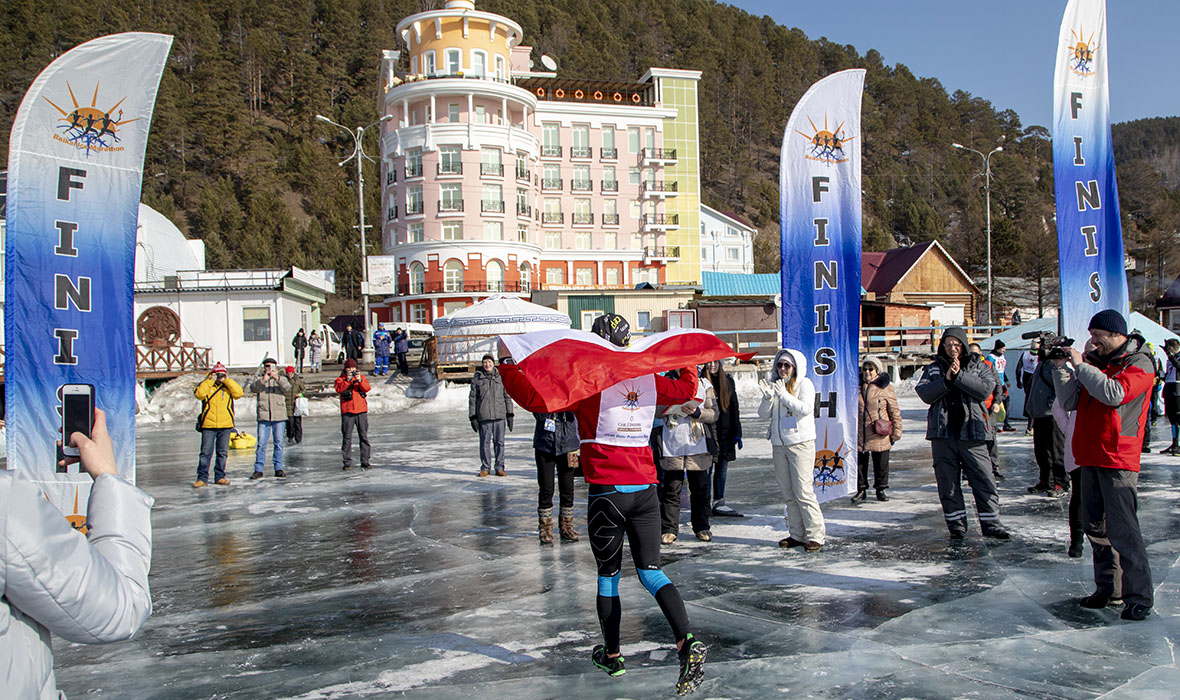
ABOVE: Humble finish line of the Baikal Marathon, by Andrei Sidorov.
The marathon is more than just an invitation to runners around the world to test themselves against one of the most severe environments on the planet, it’s part of the greater Winteraid festival which exists to promote the environmental importance of Lake Baikal as a unique biosphere. The race’s motto “Clean Water Preservation Run”, refers to protecting the mile deep lake’s legendary clarity and the unique creatures that live in it, like the Baikal seal, or nerpa, the only kind of its species that lives exclusively in freshwater. With it’s adorable puppy like face the nerpa has become the unofficial mascot of the lake, its likeness printed on everything from T-shirts to cappuccino foam.
As the run promotes Baikal’s natural purity, one must also wonder about the longevity of a marathon that’s run across an ice sheet on the world’s deepest lake as climate change makes forecasting weather less and less predictable. “ Lake Baikal freezing in winter […] becomes much less predictable. It is a fact. It starts freezing a bit later […] but interesting to note, that we still manage to lay the proper course without risk to our athletes.” Said Nikiforov.
There’s not much of a reception to mark the marathon’s finish. No confetti, no champagne, the tourists wandering around Listvyanka most likely disinterested in the life-changing challenge the runners had just experienced. Ms. Messina along with many of the other finishers though felt changed for life, she described the race like exploring another planet :“You are alone on Baikal, it is your race, you are alone with yourself.”
John McMahon is a writer and habitual traveler who has made Kanchanaburi, Thailand his home base for fifteen years. Author of five novels, his fiction, essays, and reportage have been published all over the English speaking world.

.jpg)




